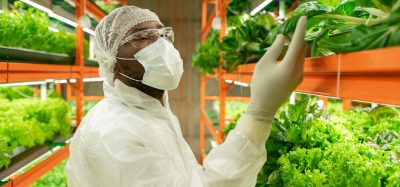When predictions start to become a grim reality, food-fraud style
Posted: 29 May 2025 | Professor Chris Elliott | No comments yet
With ears to the ground, Professor Chris Elliott reveals some concerning reports of major international food safety breaches; giving credence to his despondent forecasts.


I tend to make quite a few predictions about many aspects of our global food system. These are generally based on what I see and hear as I travel and study global food security across the world. I also absorb as much information as possible from a wide variety of sources ranging from peer-reviewed scientific literature to news articles and social media posts.
About 18 months ago in one of my New Food magazine articles, I wrote about how the world order of food is changing and the main drivers for these changes. Now, or at least in the past two weeks, I can give further insights that at least some of these predictions are becoming realised — especially in the murky world of food fraud.
The first comes courtesy of a very reliable and highly confidential source.
To track and trace where food destined for Europe actually comes from requires a fairly advanced system of tracking cargo ships from their ports of departure to their final destinations. In one instance, a grain ship leaving Ukraine laden with cereals was held up for a prolonged period in the Black Sea due to the dangers of navigating these waters. The tracking data showed that this ship eventually made its way to a port where such grain ships would not usually stop. Based on the draft of the ship, ie, how deep it sat in the water due to the size of its load, only a small amount of its cargo was actually unloaded. The ship then sailed on and its remaining contents were unloaded at a port where such cargos are commonly received.
So why should this signal cause for concern? The long delay experienced in the transit time for the grains was in excess of three months, instead of the usual 15 to 30 days for most grain shipments, depending on the distances to be travelled. We believe that the additional months spent in transit led to a heavy growth of mould on the surface of the grains and the first port of call for the cargo ship was to scrape off the surface layer to remove this mould. Otherwise, it would in all likelihood be rejected at its true port of destination due to major safety concerns. But simply scraping the surface does not make such cargo safe — far from it.
We know from experience that these moulds can produce dangerous mycotoxins that can spread across areas of the cargo. We believe this action was to remove the obvious visual evidence of the dangerous state of the cargo so it would be accepted at port before quickly moving into the food chain. I admit there is some conjecture here, but from the very start of the Ukraine war I have warned some in positions of authority that such outcomes may result. The question is: what happened to the potentially toxin-laden cargo? We believe it entered the food chain in a region where less monitoring of food safety is conducted than many others.
My second worrying account of a food fraud issue concerns a large quantity of highly contaminated onions, full of Salmonella and heavy metals, which originated in China and were imported into the Philippines. The shipment was declared as carrying chicken but on inspection the fraud and major food safety risks were uncovered.
Again, the question is why did this happen? And again, there is some conjecture. We believe the shipment was destined for the US but due to the large tariffs placed on China the ship was stranded for a considerable period of time in the South China Sea. The decision was then made to try and dump the dangerous cargo for profit into a nearby country with lower levels of food scrutiny.
The major drivers of change in our food system are complex and largely represent uncharted territory; what will happen is to some extent the greatest unknown of the unknowns. Building better intelligence-sharing systems, driving national food systems resilience and supporting national food security are three avenues that must be adopted as a matter of national security.
Related topics
Food Fraud, Food Safety, Food Security, Supply chain, Trade & Economy, World Food









